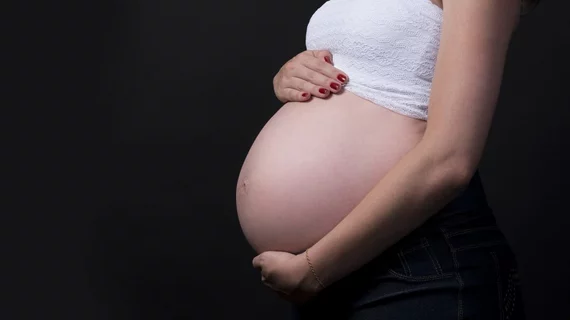Pregnant women could soon self-screen for preeclampsia
Pregnant women may soon be able to assess their own risk of preeclampsia, according to work published in the Journal of Engineering and Science in Medical Diagnostics and Therapy.
The at-home technique involves just two components, Craig Goergen, MS, PhD, and colleagues explained in the paper—a smartphone and an automated blood pressure cuff. The cuff automatically detects changes in a woman’s blood pressure as she moves between lying on her side and her back, using a connected smartphone app to ensure she’s in the correct position each time.
Goergen said in a release that the simple approach to at-home screening isn’t a new one. It was first developed in the 1970s and termed the “supine pressor test,” but while it was accurate, inconsistencies in its usage led to its eventual demise.
“When this test was used in clinics, everybody was doing it slightly differently,” Goergen said. “What does ‘left side’ mean? How long does it take? It was not working well and was basically neglected.
“But if we could automate this test to indicate to the patient when her BP has stabilized, for example, then this test could be performed by the patient herself at home.”
Goergen and his team tested the approach in a pilot study of 25 women who were at least 20 weeks pregnant. The researchers said the majority of participants found the ambulatory cuff comfortable and the procedure easy to follow, especially with smartphone software ensuring they were in the correct supine and left lateral recumbent positions.
The researchers said the test could be an effective method for screening for high blood pressure in pregnant women, especially in areas of the world where preeclampsia rates are high but access to clinics is low. It could also be used as a preventive tool, Goergen said.
“The goal is to not only identify patients with preeclampsia, but to also inform the patient that she is at a higher risk for developing this condition in a week or month from now,” he said.
According to the release, the research team is looking to advance its prototype to an autonomous device in 2020. The tech is currently protected by a provisional patent and funded by the Bill & Melinda Gates Foundation and the Indiana Clinical and Translational Sciences Institute.

